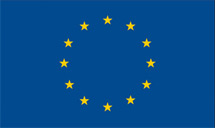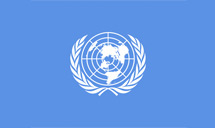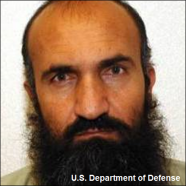Overview
Khairullah Khairkhwa is a U.N.-sanctioned senior Taliban leader who served as governor of the Taliban-run Herat Province prior to the 9/11 attacks. Herat province is where former al-Qaeda in Iraq leader Abu Musab al-Zarqawi ran a training camp.“JTF-GTMO Assessment,” New York Times Guantanamo Docket, March 6, 2008, 2, https://www.nytimes.com/interactive/projects/guantanamo/detainees/579-khirullah-said-wali-khairkhwa/documents/11. Khairkhwa was arrested by Pakistani border patrol officials in February 2002 and detained in the U.S. Guantanamo Bay detention center from May 2002 to May 2014.“S E C R E T / / NOFORN / / 20330223,” U.S. Department of Defense, February 23, 2008, http://media.miamiherald.com/static/images/escenic-images/gitmopdfs/us9af-000007dp.pdf. He was one of five Taliban senior leaders transferred to Qatar as part of the Qatar-mediated exchange for captive U.S. Sgt. Bowe Bergdahl.“Report on the Inquiry into: The Department of Defense’s May 2014 Transfer to Qatar of five law-of-war detainees in connection with the recovery of a captive U.S. soldier,” Committee on Armed Services, December 9, 2015, https://armedservices.house.gov/sites/republicans.armedservices.house.gov/files/wysiwyg_uploaded/Report%20on%20the%20Inquiry%20into%20the%20Taliban%20Five%20Transfer_0.pdf. Following the Taliban’s takeover of Afghanistan in August 2021, Khairkhwa was named minister of information and broadcasting of the Taliban government on September 7.“Taliban forms 33-member cabinet in Afghanistan: Full list,” Hindustan Times, September 8, 2021, https://www.hindustantimes.com/world-news/taliban-forms-33-member-cabinet-in-afghanistan-full-list-101631066722518.html.
According to documents from Guantanamo, Khairkhwa was “directly associated” with former al-Qaeda leader Osama bin Laden and former Taliban leader Mohammed Omar. The U.S. House Committee on Armed Forces has also noted that Khairkhwa is closely acquainted with current al-Qaeda leader Ayman al-Zawahiri.“Report on the Inquiry into: The Department of Defense’s May 2014 Transfer to Qatar of five law-of-war detainees in connection with the recovery of a captive U.S. soldier,” Committee on Armed Services, December 9, 2015, https://armedservices.house.gov/sites/republicans.armedservices.house.gov/files/wysiwyg_uploaded/Report%20on%20the%20Inquiry%20into%20the%20Taliban%20Five%20Transfer_0.pdf.
Khairkhwa has served in a variety of roles for the Taliban in Afghanistan. He served as a spokesperson for the Taliban government from 1995 to 1996, as the Taliban’s Minister of Interior from 1996 to late October 1999, and as the governor of Herat Province from late October 1999 to December 2001.“JTF-GTMO Assessment,” New York Times Guantanamo Docket, March 6, 2008, 2, https://www.nytimes.com/interactive/projects/guantanamo/detainees/579-khirullah-said-wali-khairkhwa/documents/11. After the September 11 attacks in 2001, Khairkhwa represented the Taliban in meetings with Iranian officials in an effort to rally support against U.S. and coalition forces in Afghanistan. A 2008 assessment from the Joint Task Force at Guantanamo (JTF-GTMO) further suggests that Khairkhwa was a former drug trafficker who had previously been “one of the major opium drug lords in Western Afghanistan.”“JTF-GTMO Assessment,” New York Times Guantanamo Docket, March 6, 2008, 1-2, https://www.nytimes.com/interactive/projects/guantanamo/detainees/579-khirullah-said-wali-khairkhwa/documents/11. Khairkhwa is also allegedly an acquaintance and “long-time family friend” of former Afghan President Hamid Karzai.“JTF-GTMO Assessment,” New York Times Guantanamo Docket, March 6, 2008, 3-5, https://www.nytimes.com/interactive/projects/guantanamo/detainees/579-khirullah-said-wali-khairkhwa/documents/11.
Prior to taking up with the Taliban in Afghanistan, Khairkhwa had spent time as a refugee in Pakistan, according to records from Guantanamo. Records indicate that Khairkhwa was previously the leader of his tribe, the Popalzai. While serving as the Taliban’s governor of Herat Province from 1999 to 2001, Khairkhwa’s deputy was allegedly responsible for all Arab and military affairs in that province. Khairkhwa denied knowledge of any militant activities in Herat Province during his tenure as governor, including training camps, recruitment, and weapons procurement.“JTF-GTMO Assessment,” New York Times Guantanamo Docket, March 6, 2008, 2-3, https://www.nytimes.com/interactive/projects/guantanamo/detainees/579-khirullah-said-wali-khairkhwa/documents/11. Nonetheless, Khairkhwa allegedly met with Mullah Omar twice while serving as governor of Herat Province, including one occasion where he allegedly discussed militant recruitment strategies in Herat.“JTF-GTMO Assessment,” New York Times Guantanamo Docket, March 6, 2008, 3, https://www.nytimes.com/interactive/projects/guantanamo/detainees/579-khirullah-said-wali-khairkhwa/documents/11. Khairkhwa also allegedly controlled access to and from a militant base in Herat Province, described by the JTF as “one of UBL [Osama bin Laden’s] most important bases” in Herat.“JTF-GTMO Assessment,” New York Times Guantanamo Docket, March 6, 2008, 6-7, https://www.nytimes.com/interactive/projects/guantanamo/detainees/579-khirullah-said-wali-khairkhwa/documents/11.
On October 3, 2001, Khairkhwa traveled with three other Taliban representatives to the Afghan-Iranian border to meet with Iranian officials.“JTF-GTMO Assessment,” New York Times Guantanamo Docket, March 6, 2008, 3, https://www.nytimes.com/interactive/projects/guantanamo/detainees/579-khirullah-said-wali-khairkhwa/documents/11. According to findings by the JTF, the meeting was set up by Tehran and may even have been set up by Iran’s Islamic Revolutionary Guard Corps (IRGC) in particular. During the meeting, Iranian officials allegedly offered to organize a coalition of Northern Alliance and Taliban fighters to counter U.S. and coalition forces in Afghanistan. Iran also allegedly offered to allow foreign fighters to travel through Iran into Afghanistan to join the fight against U.S. forces there.“JTF-GTMO Assessment,” New York Times Guantanamo Docket, March 6, 2008, 3, https://www.nytimes.com/interactive/projects/guantanamo/detainees/579-khirullah-said-wali-khairkhwa/documents/11.
In January 2002, Khairkhwa claims to have traveled to Chaman, Pakistan, and contacted Wali Karzai, brother of former Afghan President Hamid Karzai, to negotiate his surrender to U.S. and coalition forces.“JTF-GTMO Assessment,” New York Times Guantanamo Docket, March 6, 2008, 3, https://www.nytimes.com/interactive/projects/guantanamo/detainees/579-khirullah-said-wali-khairkhwa/documents/11. The following month, Khairkhwa was arrested by Pakistani border patrol officials while at the home of another Taliban official. After more than two weeks in Pakistani custody, Khairkhwa was transferred to U.S. custody in Quetta.“JTF-GTMO Assessment,” New York Times Guantanamo Docket, March 6, 2008, 3-4, https://www.nytimes.com/interactive/projects/guantanamo/detainees/579-khirullah-said-wali-khairkhwa/documents/11. On May 1, 2002, Khairkhwa was transferred to Guantanamo.“JTF-GTMO Assessment,” New York Times Guantanamo Docket, March 6, 2008, 4, https://www.nytimes.com/interactive/projects/guantanamo/detainees/579-khirullah-said-wali-khairkhwa/documents/11.
Khairkhwa spent 12 years in Guantanamo, and was repeatedly assessed to be an enemy combatant, posing a high risk to the United States, its allies, and interests. In 2008, the JTF recommended Khairkhwa for continued detention under supervision of the U.S. Department of Defense.“JTF-GTMO Assessment,” New York Times Guantanamo Docket, March 6, 2008, 1, https://www.nytimes.com/interactive/projects/guantanamo/detainees/579-khirullah-said-wali-khairkhwa/documents/11. On May 31, 2014, however, Khairkhwa was transferred from the U.S. detention center in Guantanamo Bay to Qatar alongside four other Taliban detainees. The move came as part of a negotiated exchange for the release of U.S. captive soldier Sgt. Bowe Bergdahl.
At the time of the their transfer, the so-called Taliban Five—including Khairkhwa—were considered to be sufficiently dangerous as to require them to remain in detention.“Report on the Inquiry into: The Department of Defense’s May 2014 Transfer to Qatar of five law-of-war detainees in connection with the recovery of a captive U.S. soldier,” Committee on Armed Services, December 9, 2015, https://armedservices.house.gov/sites/republicans.armedservices.house.gov/files/wysiwyg_uploaded/Report%20on%20the%20Inquiry%20into%20the%20Taliban%20Five%20Transfer_0.pdf. As of June 2013, Khairkhwa was considered to be “the least likely of the five to become involved in military operations” if able to reengage, but would probably “remain a Taliban political leader.”“Report on the Inquiry into: The Department of Defense’s May 2014 Transfer to Qatar of five law-of-war detainees in connection with the recovery of a captive U.S. soldier,” Committee on Armed Services, December 9, 2015, https://armedservices.house.gov/sites/republicans.armedservices.house.gov/files/wysiwyg_uploaded/Report%20on%20the%20Inquiry%20into%20the%20Taliban%20Five%20Transfer_0.pdf. Although the Memorandum of Understanding (MOU) between the United States and Qatar was classified regarding the terms for Taliban detainees released to Qatar, the U.S. House Committee on Armed Forces was able to note that the MOU specified “monitoring” efforts to be undertaken by Qatar, as well as the prohibition against detainees’ “travel outside Qatar,” “engaging in conduct that will raise money for prohibited causes,” and “threatening American interests.”“Report on the Inquiry into: The Department of Defense’s May 2014 Transfer to Qatar of five law-of-war detainees in connection with the recovery of a captive U.S. soldier,” Committee on Armed Services, December 9, 2015, 76, https://armedservices.house.gov/sites/republicans.armedservices.house.gov/files/wysiwyg_uploaded/Report%20on%20the%20Inquiry%20into%20the%20Taliban%20Five%20Transfer_0.pdf.
The U.S. House Committee on Armed Forces determined in December 2015 that members of the Taliban Five have been engaged in “threatening activities” since their transfer to Qatar “not unlike their activities before they were detained on the battlefield.”“Report on the Inquiry into: The Department of Defense’s May 2014 Transfer to Qatar of five law-of-war detainees in connection with the recovery of a captive U.S. soldier,” Committee on Armed Services, December 9, 2015, https://armedservices.house.gov/sites/republicans.armedservices.house.gov/files/wysiwyg_uploaded/Report%20on%20the%20Inquiry%20into%20the%20Taliban%20Five%20Transfer_0.pdf. In January 2015, the U.S. Pentagon said that there was reason to believe that “at least one” member of the Taliban Five was involved in “some activities… centered around potential reengagement.” In March 2015, a news outlet reported that “at least three of the five Taliban leaders… have tried to plug back into their old terror networks.”“Report on the Inquiry into: The Department of Defense’s May 2014 Transfer to Qatar of five law-of-war detainees in connection with the recovery of a captive U.S. soldier,” Committee on Armed Services, December 9, 2015, 75, https://armedservices.house.gov/sites/republicans.armedservices.house.gov/files/wysiwyg_uploaded/Report%20on%20the%20Inquiry%20into%20the%20Taliban%20Five%20Transfer_0.pdf.
As of 2015, Taliban leaders were reportedly living in an exclusive neighborhood in suburban Doha, receiving luxury SUVs, free medical care, air-conditioned homes “the size of small castles,” and fresh produce delivered daily to their homes, according to a report by Newsweek journalist Sami Yousafzai.Sami Yousafzai, “Taliban Leaders Are Living in Luxury in Qatar,” Newsweek, March 24, 2015, http://www.newsweek.com/2015/04/03/taliban-leaders-are-living-luxury-qatar-316122.html.
In 2019, the Taliban began peace negotiations with the U.S. and Afghan governments. Crucial issues included the withdrawal of American troops from Afghanistan, and a commitment that the Taliban would start negotiations with the Afghan government as well as agree to a ceasefire and renounce all its ties to al-Qaeda. Khairkhwa, along with four other former Guantanamo detainees, was part of the Taliban negotiating team.Mujib Mashal, “Once jailed in Guantanamo, 5 Taliban Now Face U.S. at Peace Talks,” New York Times, March 26, 2019, https://www.nytimes.com/2019/03/26/world/asia/taliban-guantanamo-afghanistan-peace-talks.html.
On August 6, 2021, the Taliban began an offensive against major Afghan cities with the seizure of Zaranj, capital of Nimruz province.Susannah George and Ezzatullah Mehrdad, “Taliban fighters overrun an Afghan provincial capital for the first time since withdrawal of foreign forces,” Washington Post, August 6, 2021, https://www.washingtonpost.com/world/2021/08/06/afghanistan-taliban-nimruz/. By August 13, the Taliban controlled 17 of Afghanistan’s 34 provincial capitals and more than two-thirds of the country.Rahim Faiez, and Joseph Krauss, “Taliban sweep across Afghanistan’s south; take 4 more cities,” Associated Press, August 13, 2021, https://apnews.com/article/middle-east-taliban-c6c8d4a41c554f36031a8131538d1402. On August 15, Afghan President Ashraf Ghani fled Afghanistan and thousands of Afghans poured into Kabul’s airport as Taliban fighters entered the city. By August 16, the Taliban laid siege to the presidential palace and took complete control of Kabul, after which the Taliban declared the war in Afghanistan had ended.“Taliban declares ‘war is over’ as president and diplomats flee Kabul,” Reuters, August 15, 2021, https://www.reuters.com/world/asia-pacific/talibans-rapid-advance-across-afghanistan-2021-08-10/. The Taliban has claimed that it would take on a more “moderate” approach in their ruling of the country, and that women are allowed to have roles in public life in observance of “Islamic law.”“Factbox: Taliban seek to present a moderate face as they take control in Afghanistan,” Reuters, August 15, 2021, https://www.reuters.com/world/asia-pacific/taliban-seek-present-moderate-face-they-take-control-afghanistan-2021-08-15/.
On September 7, 2021, the Taliban announced the official appointments within their caretaker government. Khairkhwa was appointed minister of information and broadcasting of the Taliban government.“Taliban forms 33-member cabinet in Afghanistan: Full list,” Hindustan Times, September 8, 2021, https://www.hindustantimes.com/world-news/taliban-forms-33-member-cabinet-in-afghanistan-full-list-101631066722518.html. The government is exclusively male, with many positions filled with veterans from their hardline movement in the early nineties.Matthieu Aikins and Jim Huylebroek, “Taliban Appoint Stalwarts to Top Government Posts,” New York Times, September 7, 2021, https://www.nytimes.com/2021/09/07/world/asia/taliban-women-protest-kabul-afghanistan.html; Kathy Gannon, “Taliban form all-male Afghan government of old guard members,” Associated Press, September 8, 2021, https://apnews.com/article/middle-east-pakistan-afghanistan-arrests-islamabad-d50b1b490d27d32eb20cc11b77c12c87.
Associated Groups
- Extremist entity
- Taliban
- Read Threat Report
- Type(s) of Organization:
- Insurgent, regional, terrorist, transnational, violent
- Ideologies and Affiliations:
- Deobandi, Islamist, jihadist, Pashtun, Salafi, Sunni, Wahhabi
- Position(s):
- Minister of Information and Broadcasting of the Taliban government
The Taliban seized power in Afghanistan in August 2021 after previously leading a violent insurgency in Afghanistan and Pakistan. The group is closely affiliated with al-Qaeda.
History
European Union

Khairullah Khairkhwa is subject to EU sanctions.EU Sanctions List, accessed June 21, 2017, http://ec.europa.eu/external_relations/cfsp/sanctions/list/version4/global/global.xml.
United Nations

Khairullah Khairkhwa was listed by the United Nations as an individual associated with the Taliban on January 25, 2001.“Security Council 1988 Sanctions Committee Amends Fourteen Names on Its Sanctions List ,” U.N. Security Council, September 7, 2016, https://www.un.org/press/en/2016/sc12510.doc.htm.
